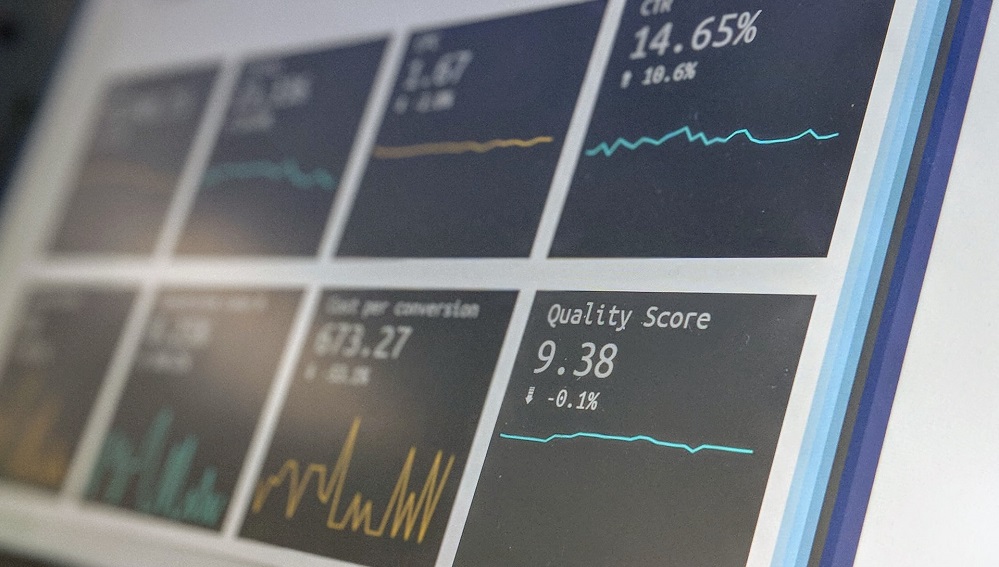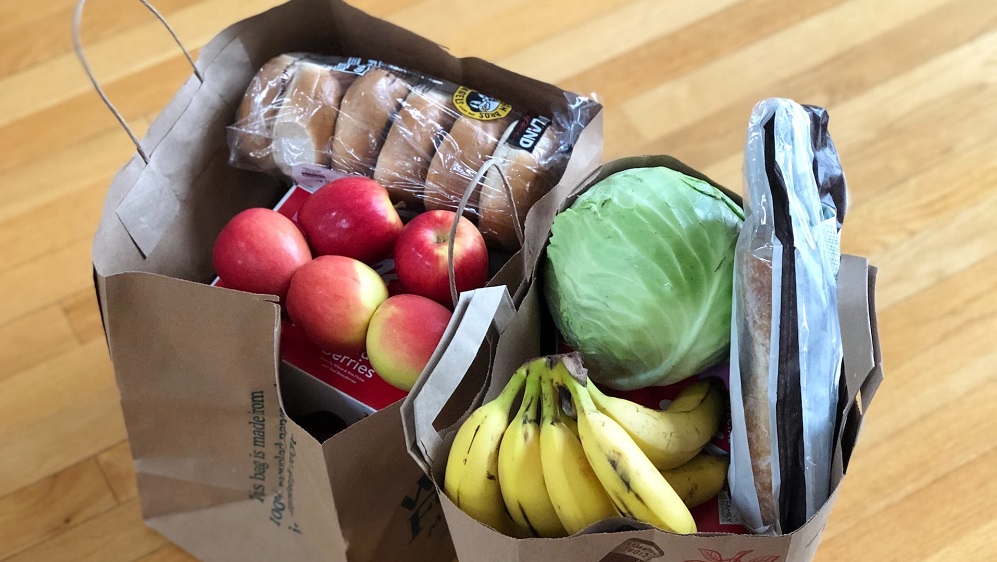On March 20, 2023, Foot Locker Inc (NYSE: FL) reported fourth quarter revenue that exceeded investors’ expectations and remained relatively consistent compared to the year before. The day after Foot Locker’s earnings call, Nike Inc (NYSE: NKE) also announced an earnings surprise for its third fiscal quarter of 2023. Bloomberg Second Measure’s transaction data correctly projected the earnings surprises for both Foot Locker and Nike within one percent of reported revenue, beating mean consensus estimates.
When many Americans sheltered in their homes early in the coronavirus pandemic, meal delivery sales reached new heights. Consumer transaction data shows that in April 2020, combined sales for major meal delivery services grew 162 percent year-over-year and 59 percent compared to the previous month. Despite new macroeconomic challenges such as rising food prices, competition from dine-in restaurants, and increased fuel costs, the meal delivery industry as a whole is continuing to see some growth, though at much lower rates than those pandemic peaks.
Amid a highly-anticipated earnings season for retailers, off-price chain Burlington (NYSE: BURL) reported earnings that beat investors’ expectations in the fourth quarter of 2022. Ahead of Burlington’s holiday quarter earnings announcement, Bloomberg Second Measure transaction data projected $2.78 billion in revenue—within two percent of Burlington’s reported revenue—while the mean consensus estimate was more than 5 percent lower than reported revenue, at $2.60 billion.
In 2022, high inflation impacted sales trends across various retail sectors in the U.S.—from big-box stores and discount chains to grocery companies. While inflation began easing in mid-2022, food prices have remained elevated throughout 2022 and into 2023. Amid rising food prices, discount grocery chain Grocery Outlet (NASDAQ: GO) saw its sales in the first two months of 2023 grow more than in comparable periods of 2021 and 2022, Bloomberg Second Measure transaction data shows. Apart from food price hikes, another possible factor behind the company’s sales growth is expansion into new markets. Additionally, our data shows growth in average transaction values, possibly due to a shift towards shopping for value.
On February 22, 2023, The TJX Companies (NYSE: TJX) announced that its revenue for the fiscal quarter ending on January 28, 2023 (FY23 Q4) was $14.52 billion, a 5 percent increase from the previous year. The report, which was the first among major off-price retailers during the first earnings season of 2023, exceeded analysts’ revenue expectations.
Eating healthier food and losing weight are popular New Year’s resolutions. Many U.S. consumers sign up with weight-loss programs to aid in their goal, but how likely are they to stick with their new eating habits? Consumer transaction data shows that weight-loss programs like Weight Watchers—owned by WW International, Inc (NASDAQ: WW)—and Nutrisystem see an uptick in new customers each January. However, retention rates show that most customers who signed up in January 2022 did not remain with either of these programs after a year.
When many Americans sheltered in their homes early in the coronavirus pandemic, meal delivery sales reached new heights. Consumer transaction data shows that in April 2020, combined sales for major meal delivery services grew 162 percent year-over-year and 59 percent compared to the previous month. Despite new macroeconomic challenges such as rising food prices, competition from dine-in restaurants, and increased fuel costs, the meal delivery industry as a whole is continuing to see some growth, though at much lower rates than those pandemic peaks. Our data reveals that in January 2023, sales for major meal delivery services grew 3 percent year-over-year, collectively.
At the end of November 2022, Amazon.com, Inc (NASDAQ: AMZN) announced that it saw record sales during the five-day shopping period between Thanksgiving and Cyber Monday. But how did the rest of the holiday season fare? Consumer transaction data shows that Amazon’s U.S. consumer sales during the 2022 holiday season exceeded its holiday sales during the previous three years. In addition, Amazon’s year-over-year holiday sales performance outpaced that of several major superstore companies, such as Target and Costco.
Meal kit companies had sizzling sales in the early months of COVID-19, as consumers turned to subscription services to fulfill basic needs. But in recent years, the industry has seen challenges related to seasonal demand, rising inflation, and high operational and marketing costs. In fact, some meal kit companies like Blue Apron and HelloFresh announced layoffs in recent months, and Blue Apron (NYSE: APRN) received a delisting notice from the NYSE in December 2022.
Beauty companies like Ulta Beauty (NASDAQ: ULTA) have been in the spotlight over the past several months, in response to rising cosmetic sales in the wake of high inflation and economic uncertainty (a phenomenon sometimes referred to as the “lipstick effect”). In fact, Ulta recently surpassed investors’ expectations in its third quarter earnings report and even boosted its holiday sales outlook. So how did the beauty retailer’s holiday sales fare? Using consumer transaction data, Bloomberg Second Measure analyzed holiday spending trends at Ulta and its LVMH-owned competitor Sephora.
Chinese ecommerce giant Shein has experienced a meteoric rise in the U.S. fast fashion market, with its sales and market share overtaking competitors such as H&M, Fashion Nova, Forever 21, ASOS, and Zara during the COVID-19 pandemic. Using U.S. consumer spending data, we analyzed how Shein’s U.S. sales have boomed over the past few years, as well as how other fast fashion companies have fared.
Over the past several years, teen-focused jewelry retailer Claire’s Stores Inc went from filing for bankruptcy to filing for an IPO, as the company gradually expanded its offerings to attract new customers and experimented with different omnichannel strategies. Our analysis of U.S. consumer spending data since 2019 found that a higher proportion of the company’s direct-to-consumer sales come from new customers versus returning customers. At the same time, most of Claire’s DTC sales still come from brick-and-mortar stores rather than its ecommerce site—although online sales typically spike each November, likely fueled by the company’s major Cyber Monday sale.
As the battle for consumer spending intensifies in the 2022 holiday season, Bloomberg Second Measure analyzed three major big-box retailers known for their Black Friday events—Walmart Inc (NYSE: WMT), Target Corporation (NYSE: TGT), and Best Buy Co, Inc (NYSE: BBY)—to see how they fared during Black Friday week. Using consumer transaction data, we found that Walmart outperformed its peers in terms of overall year-over-year sales growth in the U.S. Additionally, all three companies saw greater year-over-year growth in their online sales than their retail sales.
With holiday shopping in full swing, several retailers—including department stores like Kohl’s and big-box stores like Target—are reportedly bracing for deep discounts in response to excess inventory and value-conscious consumers. At the same time, off-price retailers are reportedly benefitting from the inventory challenges faced by their suppliers, and have been able to negotiate lower buying prices and further diversify the brands in their merchandise.
Pandemic-driven shifts away from retail shopping during the 2020 holiday season raised the question of whether sales events such as Black Friday would draw shoppers back to stores in 2021. Looking at in-store consumer trends for major department store companies—Macy’s Inc (NYSE: M), Kohl’s (NYSE: KSS), Dillard’s (NYSE: DDS), J.C. Penney, and Nordstrom Inc (NYSE: JWN)—during Black Friday week over the past three years, only Dillard’s retail sales during Black Friday week in 2021 reached pre-COVID levels. Among the public department store companies in this peer group, Kohl’s also saw the highest share of its fiscal quarter sales occur during Black Friday week.
Following a reported sales slowdown in its second fiscal quarter, department store chain Dillard’s Inc (NYSE: DDS) exceeded investors’ expectations with the release of its third quarter earnings report. Prior to the Q3 earnings surprise announcement, transaction data from Bloomberg Second Measure projected Dillard’s third quarter revenue within 1 percent of the company’s reported revenue.
As the holiday season approaches, retailers are gearing up for major sales events like Black Friday. Among these are sporting goods retailers, which reportedly saw an increase in demand for camping and outdoor gear during pandemic lockdowns. So how did these companies fare during Black Friday week over the last few years? Our peer analysis of major sporting goods retailers—Academy Sports & Outdoors (NASDAQ: ASO), Big 5 Sporting Goods (NASDAQ: BGFV), Dick’s Sporting Goods (NYSE: DKS), REI, and Sportsman’s Warehouse (NASDAQ: SPWH)—found that Sportsman’s Warehouse saw the most customer growth during Black Friday week in 2021.
For the first time ever, Amazon.com Inc (NASDAQ: AMZN) hosted two Prime Day sales events in the same year—one in July and one in October of 2022. So how did the Amazon Prime Day 2022 results in October fare against previous Prime Days, as well as competing sales events held by retail competitors Walmart Inc (NYSE: WMT) and Target Corp (NYSE: TGT)? Consumer transaction data reveals that Amazon.com Inc’s U.S. consumer sales during the week of the Prime sales event in October 2022 were lower than Amazon Prime Day week in July 2022, but higher than Prime Day weeks in prior years.
Despite high inflation and rising menu prices, full-service restaurants (FSRs) have been staging a comeback. Consumer transaction data reveals that for major FSR competitors—Bloomin’ Brands (NASDAQ: BLMN), The Cheesecake Factory Inc (NASDAQ: CAKE), Cracker Barrel Old Country Store Inc (NASDAQ: CBRL), Darden Restaurants (NYSE: DRI), Denny’s Corp (NASDAQ: DENN), and Dine Brands Global (NYSE: DIN)—sales in the third quarter of 2022 were higher than they were in the same quarter of 2019.
Pet supply companies saw their sales rise early in the pandemic, as many U.S. consumers adopted pets during the pandemic lockdowns. In the case of Chewy (NYSE: CHWY), a digitally-native pet supply company, sales remain elevated more than two years into the pandemic, Bloomberg Second Measure’s consumer transaction data shows. A closer look reveals, however, that the company’s year-over-year growth in sales slowed down between January and August of 2022, compared with the corresponding periods in 2020 and 2021, while customer counts during most months of 2022 remained relatively consistent year-over-year, but higher than in 2020 and 2019.
























